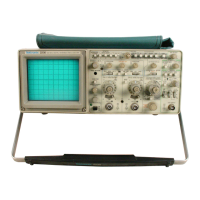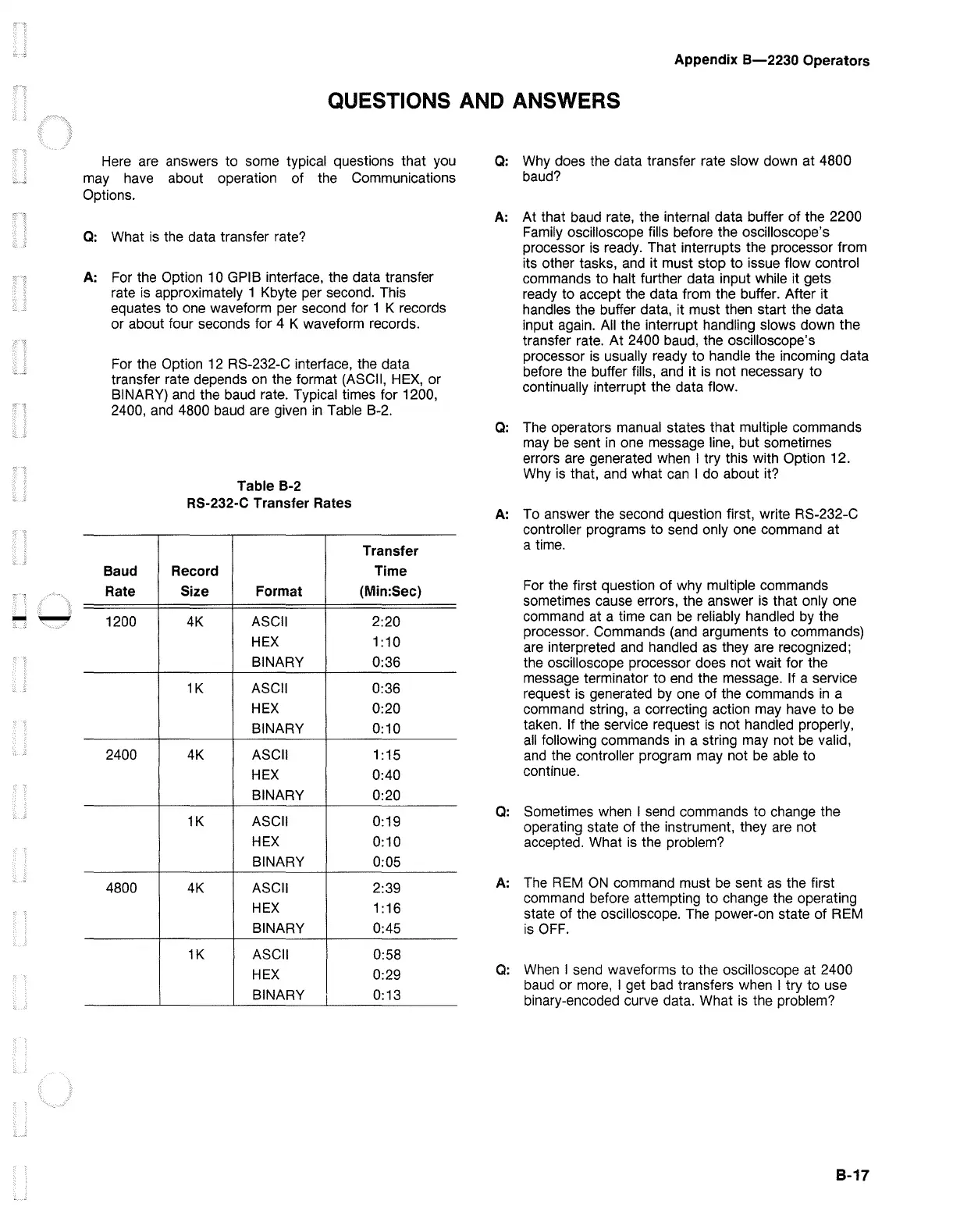--
Appendix
B-2230
Operators
QUESTIONS AND ANSWERS
Here are answers to some typical questions that you
may have about operation of the Communications
Options.
Q:
What
is
the data transfer rate?
A:
For the Option 10 GPIB interface, the data transfer
rate
is
approximately 1 Kbyte per second. This
equates to one waveform per second for 1 K records
or about four seconds for 4 K waveform records.
For the Option
12
RS-232-C interface, the data
transfer rate depends
on
the format (ASCII,
HEX,
or
BINARY) and the baud rate. Typical times for 1200,
2400,
and
4800 baud
are
given
in
Table B-2.
Baud
Rate
1200
2400
4800
Table
8-2
RS-232-C Transfer Rates
Record
Size Format
4K
ASCII
HEX
BINARY
1K ASCII
HEX
BINARY
4K
ASCII
HEX
BINARY
1K
ASCII
HEX
BINARY
4K ASCII
HEX
BINARY
1K ASCII
HEX
BINARY
Transfer
Time
(Min:Sec)
2:20
1:10
0:36
0:36
0:20
0:10
1 :15
0:40
0:20
0:19
0:10
0:05
2:39
1 :16
0:45
0:58
0:29
0:13
Q:
Why does the data transfer rate slow down at 4800
baud?
A:
At that baud rate, the internal data buffer of the 2200
Family oscilloscope fills before the oscilloscope's
processor is ready. That interrupts the processor from
its other tasks,
and
it must stop to issue flow control
commands to halt further data input while it gets
ready to accept the data from the buffer. After it
handles the buffer data, it must then start the data
input again. All the interrupt handling slows down the
transfer rate.
At
2400 baud, the oscilloscope's
processor
is
usually ready to handle the incoming data
before the buffer fills,
and
it
is
not necessary to
continually interrupt the data flow.
Q:
The operators manual states that multiple commands
may
be
sent
in
one message line, but sometimes
errors are generated when I try this with Option 12.
Why is that, and what
can
I do about it?
A:
To answer the second question first, write RS-232-C
controller programs to send only one command at
a time.
For the first question
of
why multiple commands
sometimes cause errors, the answer
is
that only one
command at a time can
be
reliably handled by the
processor. Commands
(and
arguments to commands)
are
interpreted
and
handled as they are recognized;
the oscilloscope processor does not wait for the
message terminator to end the message. If a service
request
is
generated by one of the commands
in
a
command string, a correcting action may have to be
taken. If the service request
is
not handled properly,
all
following commands
in
a string may not
be
valid,
and
the controller program may not
be
able to
continue.
Q:
Sometimes when I send commands to change the
operating state of the instrument, they are not
accepted. What
is
the problem?
A:
The
REM
ON
command must
be
sent
as
the first
command before attempting to change the operating
state of the oscilloscope. The power-on state of REM
is
OFF.
Q:
When
I send waveforms to the oscilloscope at 2400
baud or more, I get
bad
transfers when I try to use
binary-encoded curve data. What is the problem?
B-17

